We may receive a commission when you use our affiliate links. However, this does not impact our recommendations.
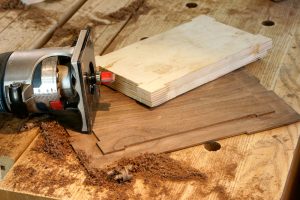 The most important skill in woodworking is problem-solving, and you don’t develop that skill by following spoon-fed, step-by-step directions. It is also extremely difficult to learn that skill all by yourself. I try to visualize what the results should look like, then apply the tools I have and the techniques I know to get there.Then I question everything about the process.
The most important skill in woodworking is problem-solving, and you don’t develop that skill by following spoon-fed, step-by-step directions. It is also extremely difficult to learn that skill all by yourself. I try to visualize what the results should look like, then apply the tools I have and the techniques I know to get there.Then I question everything about the process.
Most of the time there are several options, so I try not to jump on the first idea that comes to mind, or to reject methods that I’m not completely familiar with. The goal is to have fun and make something I’m proud of, so I look for the easy way out, without sacrificing accuracy or putting myself or the wood at undue risk. But with so many options, and so much information available, it is hard to be sure if the plan is really a good solution, the product of narrow thinking or sensory overload from too much reading and analyzing.
The best way to check a solution is to talk about it with another woodworker. I was reminded of this recently when I didn’t seek advice going in, then had a head-smacking moment in the midst of things. In the picture above, the walnut piece was the goal. The perimeter steps in and out, and there is a wide rabbet inset from the perimeter.
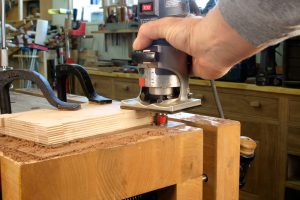 I thought I had a clever solution. I made a template (and found a cool way to make the template) then used a mortising bit (with a bearing above the cutter) to make the cuts. I even took a better than average photo of the setup. But there were some things I wasn’t entirely happy with in the process. I had to clamp the whole shebang down to the bench, so I couldn’t get all the way around the piece without resetting the holdfasts. And when I got to the outside corners there wasn’t much surface area on the base of the router – just enough to press the base down with my thumb. It did work, and I made a couple of pieces this way in preparation for a video shoot.
I thought I had a clever solution. I made a template (and found a cool way to make the template) then used a mortising bit (with a bearing above the cutter) to make the cuts. I even took a better than average photo of the setup. But there were some things I wasn’t entirely happy with in the process. I had to clamp the whole shebang down to the bench, so I couldn’t get all the way around the piece without resetting the holdfasts. And when I got to the outside corners there wasn’t much surface area on the base of the router – just enough to press the base down with my thumb. It did work, and I made a couple of pieces this way in preparation for a video shoot.
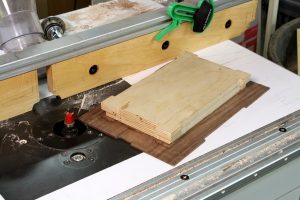 If the camera operator didn’t know beans about woodworking, you would have seen me sweating to keep the router level as I worked my way around the piece. But David Thiel was behind the camera, and he grew up in his dad’s cabinet shop. After I explained how the template worked, and how I would attach it to the piece, he said “and then you head to the router table, right?” I started to say “no” and picked up the router to show him my method when I realized that the router table was a far better method than mine. With the work template-side down there wasn’t any danger of tipping the hand-held router and ruining the cut.
If the camera operator didn’t know beans about woodworking, you would have seen me sweating to keep the router level as I worked my way around the piece. But David Thiel was behind the camera, and he grew up in his dad’s cabinet shop. After I explained how the template worked, and how I would attach it to the piece, he said “and then you head to the router table, right?” I started to say “no” and picked up the router to show him my method when I realized that the router table was a far better method than mine. With the work template-side down there wasn’t any danger of tipping the hand-held router and ruining the cut.
One of the blessings of this job is the people I get to work with – experienced woodworkers who have been around the block many, many times. Sometimes I talk to one of them and end up saying, “Well, duh! that is a better way to do it” and sometimes I get to be the one who induces that response. In either case, it’s the sharing of knowledge and experience that makes solving the next problem easier.
Chuck Bender is a guy who knows his stuff, makes it look easy, and shows you how to keep things simple and actually make something. Check out his DVD “Dovetail Apprenticeship” in our store.
Here are some supplies and tools we find essential in our everyday work around the shop. We may receive a commission from sales referred by our links; however, we have carefully selected these products for their usefulness and quality.








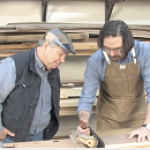
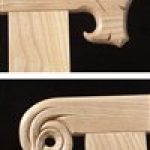
Yeah, its a great hobby, and meeting people w/ Plan B is just one of the things that make’s this hobby great!
On the other hand, there’s always the ‘Doh!’ method.